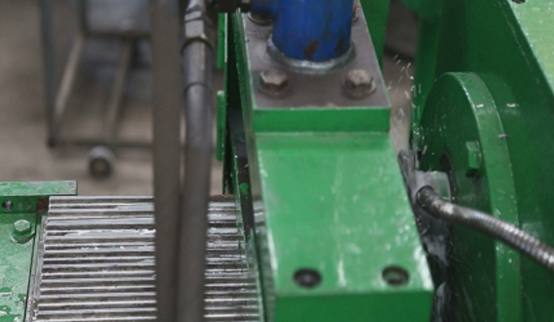 Afrikaans
Afrikaans  Albanian
Albanian  Amharic
Amharic  Arabic
Arabic  Armenian
Armenian  Azerbaijani
Azerbaijani  Basque
Basque  Belarusian
Belarusian  Bengali
Bengali  Bosnian
Bosnian  Bulgarian
Bulgarian  Catalan
Catalan  Cebuano
Cebuano  Corsican
Corsican  Croatian
Croatian  Czech
Czech  Danish
Danish  Dutch
Dutch  English
English  Esperanto
Esperanto  Estonian
Estonian  Finnish
Finnish  French
French  Frisian
Frisian  Galician
Galician  Georgian
Georgian  German
German  Greek
Greek  Gujarati
Gujarati  Haitian Creole
Haitian Creole  hausa
hausa  hawaiian
hawaiian  Hebrew
Hebrew  Hindi
Hindi  Miao
Miao  Hungarian
Hungarian  Icelandic
Icelandic  igbo
igbo  Indonesian
Indonesian  irish
irish  Italian
Italian  Japanese
Japanese  Javanese
Javanese  Kannada
Kannada  kazakh
kazakh  Khmer
Khmer  Rwandese
Rwandese  Korean
Korean  Kurdish
Kurdish  Kyrgyz
Kyrgyz  Lao
Lao  Latin
Latin  Latvian
Latvian  Lithuanian
Lithuanian  Luxembourgish
Luxembourgish  Macedonian
Macedonian  Malgashi
Malgashi  Malay
Malay  Malayalam
Malayalam  Maltese
Maltese  Maori
Maori  Marathi
Marathi  Mongolian
Mongolian  Myanmar
Myanmar  Nepali
Nepali  Norwegian
Norwegian  Norwegian
Norwegian  Occitan
Occitan  Pashto
Pashto  Persian
Persian  Polish
Polish  Portuguese
Portuguese  Punjabi
Punjabi  Romanian
Romanian  Russian
Russian  Samoan
Samoan  Scottish Gaelic
Scottish Gaelic  Serbian
Serbian  Sesotho
Sesotho  Shona
Shona  Sindhi
Sindhi  Sinhala
Sinhala  Slovak
Slovak  Slovenian
Slovenian  Somali
Somali  Spanish
Spanish  Sundanese
Sundanese  Swahili
Swahili  Swedish
Swedish  Tagalog
Tagalog  Tajik
Tajik  Tamil
Tamil  Tatar
Tatar  Telugu
Telugu  Thai
Thai  Turkish
Turkish  Turkmen
Turkmen  Ukrainian
Ukrainian  Urdu
Urdu  Uighur
Uighur  Uzbek
Uzbek  Vietnamese
Vietnamese  Welsh
Welsh  Bantu
Bantu  Yiddish
Yiddish  Yoruba
Yoruba  Zulu
Zulu Understanding the Function and Benefits of a Snub Roller in Conveyor Systems
The Role and Importance of Snub Rollers in Conveyor Systems
In the world of material handling and logistics, efficiency is paramount. One crucial component that aids in the smooth operation of conveyor systems is the snub roller. Snub rollers play a vital role in manipulating the direction and tension of conveyor belts, contributing significantly to the overall performance and reliability of these systems.
What is a Snub Roller?
A snub roller is a specific type of idler roller used in conveyor belt systems. It is typically positioned at an angle to the belt's direction of movement, allowing it to change the belt's path, primarily in turn application or to increase the tension on the return side of the belt. The snub roller is designed to maintain proper tension in the system, ensuring that the belt operates efficiently and effectively. Generally, snub rollers are found in various industries, including mining, manufacturing, and distribution, where conveyor systems are essential for transporting materials.
Functions of Snub Rollers
The primary functions of snub rollers include
1. Belt Tracking One of the most critical roles of the snub roller is to guide the conveyor belt and keep it aligned. By adjusting the belt's trajectory, the snub roller helps prevent slippage and misalignment, which can lead to operational inefficiencies or even damage to the belt and associated equipment.
2. Tension Control Maintaining adequate tension in a conveyor belt is crucial for its proper operation. Snub rollers increase the tension in the belt by redirecting its path, which can improve traction and facilitate the movement of materials. This adjustment can be particularly beneficial in overcoming friction and resistance in the system.
snub roller

3. Reducing Wear and Tear The correct use of snub rollers can significantly enhance the longevity of a conveyor belt. By ensuring proper alignment and tension, snub rollers mitigate excessive wear and tear on the belt. This reduces the frequency of replacements and maintenance, thus lowering operational costs over time.
4. Improving Performance When integrated into a conveyor system, snub rollers help to streamline the transportation of materials, reducing blockages and delays. By enhancing the belt’s stability and ensuring it operates smoothly, snub rollers contribute to continuous workflow and increased productivity.
Installation and Maintenance
Proper installation and maintenance of snub rollers are essential for achieving optimal performance. When installing a snub roller, it is crucial to position it at the correct angle and distance from the main roller to ensure effective function. Regular inspection for wear, alignment, and corrosion is equally important. Operators should also look for signs of excessive tension, which could indicate the need for adjustment.
While snub rollers are resilient components, they are not immune to wear. Over time, bearings can deteriorate, and rollers may become misaligned. Routine checks can identify issues early, preventing costly downtime and extending the life of the conveyor system.
Conclusion
In summary, snub rollers are indispensable elements of conveyor systems, serving multiple essential purposes such as belt tracking, tension control, reducing wear, and improving overall performance. As industries continue to rely on conveyor systems for efficient material transportation, understanding the role of these components becomes paramount. Ensuring the proper installation and maintenance of snub rollers can lead to enhanced productivity, reduced operational costs, and a more reliable system overall. Investing in quality snub rollers and adhering to best practices in their management is a strategic move for any operation that values efficiency and longevity in its material handling processes.
-
Revolutionizing Conveyor Reliability with Advanced Rubber Lagging PulleysNewsJul.22,2025
-
Powering Precision and Durability with Expert Manufacturers of Conveyor ComponentsNewsJul.22,2025
-
Optimizing Conveyor Systems with Advanced Conveyor AccessoriesNewsJul.22,2025
-
Maximize Conveyor Efficiency with Quality Conveyor Idler PulleysNewsJul.22,2025
-
Future-Proof Your Conveyor System with High-Performance Polyurethane RollerNewsJul.22,2025
-
Driving Efficiency Forward with Quality Idlers and RollersNewsJul.22,2025





























